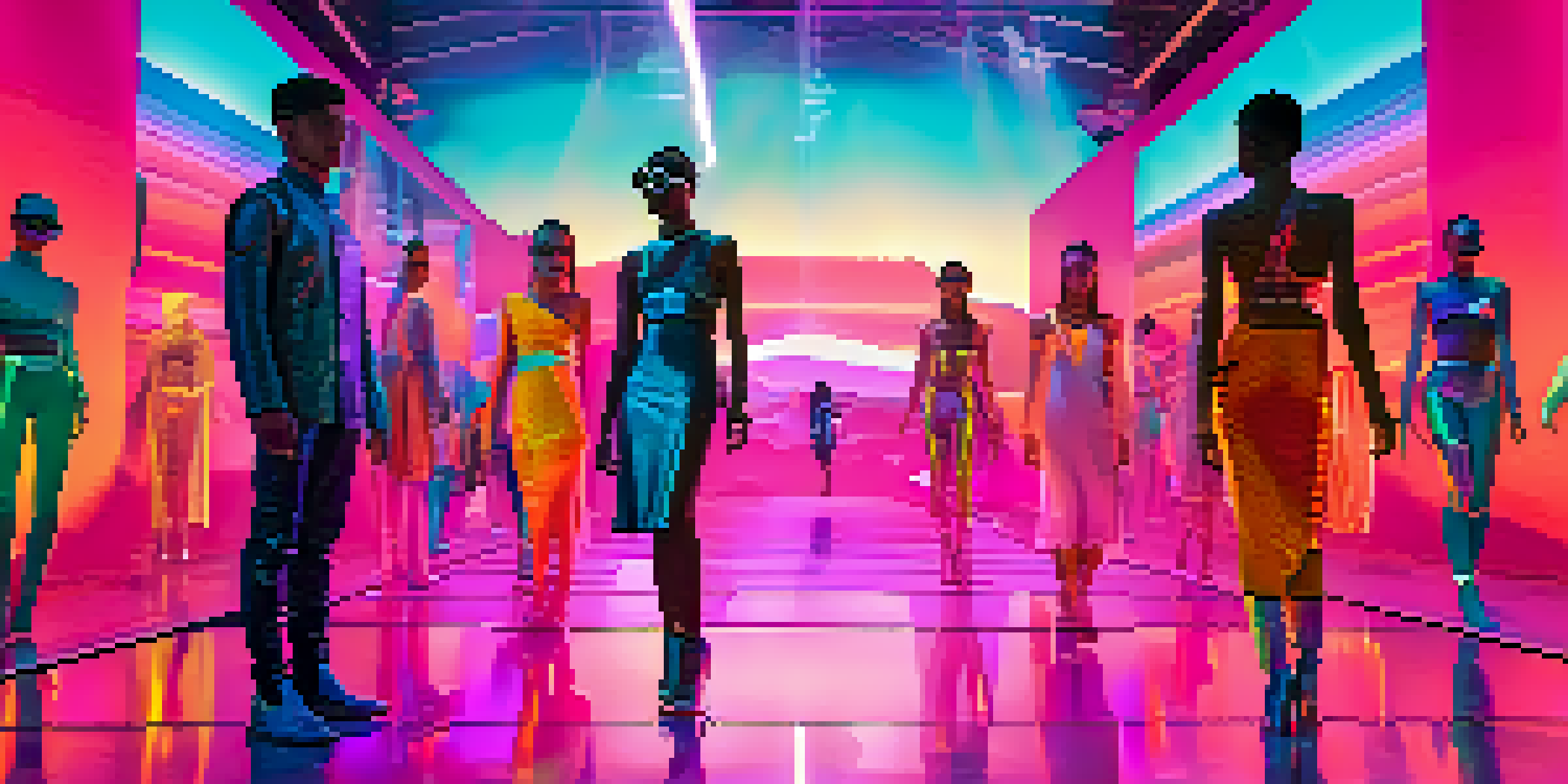The Impact of NFTs on the Fashion Industry and Digital Wearables

Understanding NFTs and Their Role in Fashion
NFTs, or non-fungible tokens, represent unique digital assets that cannot be replicated. In the fashion industry, this means designers can create one-of-a-kind pieces that exist only in the digital realm. This uniqueness adds value, much like a rare designer handbag or a limited-edition sneaker.
Fashion is about dreaming and making other people dream. The digital world opens up new avenues for that creativity.
For fashion brands, NFTs offer a new way to engage with consumers, allowing them to purchase exclusive digital clothing or accessories for their avatars in virtual worlds. This intersection of technology and creativity provides brands with an innovative platform to showcase their designs beyond traditional physical boundaries.
Moreover, NFTs can help combat counterfeiting, a significant issue in the fashion world. By verifying the authenticity of a digital asset through blockchain technology, brands can ensure that consumers receive genuine products, thus enhancing trust and loyalty.
The Rise of Digital Fashion Shows and Virtual Runways
As the fashion industry adapts to a more digital landscape, virtual runways and digital fashion shows have gained traction. These events allow brands to showcase their latest collections in immersive experiences, attracting global audiences without the constraints of physical venues. Imagine attending a fashion show from your living room, complete with stunning visuals and interactive elements.

Digital fashion shows also provide a platform for emerging designers to gain exposure without the high costs associated with traditional shows. This democratization of fashion allows for diverse voices and creativity to flourish, giving consumers fresh perspectives on style.
NFTs Transform Fashion Engagement
Fashion brands are using NFTs to create unique digital assets that enhance consumer engagement and provide new revenue streams.
Additionally, these digital events can easily incorporate NFTs, allowing attendees to purchase exclusive digital garments that can be worn in virtual environments. This intertwining of fashion and technology creates a unique consumer experience, blurring the lines between reality and the digital realm.
How Brands Are Leveraging NFTs for Marketing
Fashion brands are increasingly using NFTs as a marketing tool, creating buzz and excitement around new launches. By releasing limited-edition NFTs, brands can create a sense of urgency and exclusivity, driving consumer interest and engagement. For instance, a well-timed NFT drop can generate significant media coverage and social media chatter.
The future of fashion is not just in the physical realm but in a digital landscape that allows for endless creativity and self-expression.
Collaborations between brands and digital artists have also become a popular strategy. By partnering with renowned creators, fashion labels can produce unique NFT collections that resonate with a wider audience. This not only enhances brand visibility but also taps into the growing market of digital art collectors.
Furthermore, NFTs can serve as loyalty rewards, offering consumers exclusive access to future collections or events. This innovative approach fosters a deeper connection between brands and their customers, encouraging brand loyalty in a competitive marketplace.
The Challenges Facing NFTs in Fashion
Despite the many benefits, the integration of NFTs in fashion is not without challenges. One major concern is the environmental impact of blockchain technology, particularly those that rely on energy-intensive proof-of-work systems. As consumers become more environmentally conscious, brands must navigate these concerns carefully.
Additionally, the volatility of the NFT market can pose risks for fashion brands. The value of digital assets can fluctuate dramatically, leading to uncertainty for both creators and consumers. This unpredictability may deter some brands from fully committing to NFT strategies.
Digital Fashion Shows Redefine Trends
Virtual runways and digital fashion events democratize the industry, allowing emerging designers to showcase their work globally.
Lastly, there’s the issue of market saturation. As more brands jump on the NFT bandwagon, standing out becomes increasingly difficult. Fashion houses need to find innovative ways to differentiate their offerings to capture consumer attention and maintain relevance.
The Appeal of Virtual Wearables in Online Communities
Virtual wearables have become a staple in online communities, particularly in gaming and social media platforms. These digital items allow users to customize their avatars, showcasing their personal style in a virtual space. As online interaction continues to grow, so does the demand for unique virtual fashion pieces that reflect individual identities.
Brands are recognizing this shift and are creating virtual clothing lines designed specifically for digital platforms. This evolution not only caters to consumers looking to express themselves but also opens new revenue streams for fashion labels. Imagine sporting a designer outfit in a game or on social media that no one else can wear.
Moreover, virtual wearables can enhance social interactions in digital environments, making them more engaging. These unique pieces foster connections among users, as they bond over shared interests and trends in virtual fashion, further enriching the online community experience.
Sustainability and Ethical Considerations in Digital Fashion
The rise of digital fashion and NFTs also brings sustainability into the spotlight. By creating virtual garments, brands can reduce waste associated with traditional fashion production, such as excess inventory and unsold items. This shift aligns with the growing consumer demand for eco-friendly practices in the fashion industry.
Furthermore, digital fashion offers an opportunity for brands to experiment with innovative materials and designs without the constraints of physical production. This allows for more creativity while minimizing the environmental footprint. Picture wearing a dress that exists only in the digital world, eliminating the need for fabric and labor.
Sustainability in Digital Fashion
The shift toward virtual garments reduces waste and aligns with the growing consumer demand for eco-friendly practices in fashion.
However, brands must also consider the ethical implications of blockchain technology. Ensuring that their digital practices align with sustainable and ethical standards is crucial for maintaining consumer trust. By being transparent about their processes, fashion brands can position themselves as leaders in both digital innovation and sustainability.
The Future of NFTs and Digital Fashion
As technology evolves, the future of NFTs and digital fashion looks promising. We can expect to see more seamless integration of virtual wearables into our daily lives, from social media to augmented reality experiences. This progression will likely reshape how we perceive fashion and style in the digital age.
Additionally, as brands continue to explore the possibilities of NFTs, we may witness new business models emerging. Subscription services for exclusive virtual collections or immersive experiences could become commonplace, offering consumers unique ways to engage with their favorite brands.

Ultimately, the fusion of NFTs and fashion represents a cultural shift that reflects our changing relationship with technology and self-expression. As consumers increasingly embrace digital identities, fashion will continue to adapt, ensuring that creativity knows no bounds in both the physical and virtual realms.